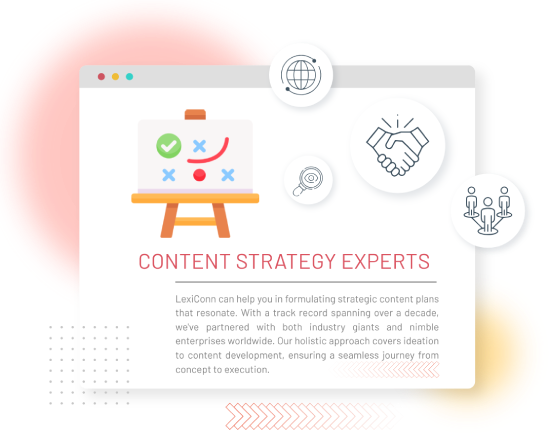

Imagine this: You’re a business leader investing heavily in content. You’ve hired a stellar team, launched multiple campaigns, and created a website brimming with articles, videos, and infographics. Yet, somehow, the results don’t match your expectations. The leads are trickling in, your audience engagement is lukewarm, and ROI? Barely noticeable. What went wrong?
For many businesses, the issue isn’t the lack of effort but a disconnect between content strategy and content marketing. These terms are often used interchangeably, but they serve very different purposes. Understanding their distinctions is the key to creating impactful, results-driven content. Let’s break it down.
Think of content strategy as the blueprint for your content. It’s not about creating content—it’s about planning what content to create, why to create it, and how to ensure it achieves your business goals. When executed effectively, content strategy serves as the backbone of a business’s digital presence, ensuring every piece of content contributes to measurable success. Let’s break down the key elements of a robust content strategy:
Who is your target audience? This is the cornerstone of any content strategy. Understanding your audience means delving deep into their pain points, preferences, and behaviors. For instance:
What do you want your content to accomplish? A well-defined content strategy is always anchored in specific, measurable goals. For example:
Clear goals help in creating a roadmap that aligns content marketing efforts with broader business objectives. Without this clarity, even the most well-crafted SEO content may fail to yield results.
Content mapping is the process of aligning formats and topics to each stage of your audience’s journey. Whether it’s awareness, consideration, or decision-making, each stage demands tailored content. For instance:
Mapping ensures every piece of content—from a simple email to a comprehensive guide—serves a specific purpose in your content marketing funnel. This is a prime example of the key differences between strategy and execution.
A great piece of content is only as good as its distribution strategy. Where will your content live, and how will it reach your audience? Effective content strategy ensures that:

A strategic approach to distribution amplifies the impact of your content marketing efforts. It’s not just about creating; it’s about ensuring your content reaches and resonates with the right people.
How will you measure success? Metrics are the compass of any content strategy, guiding you toward continuous improvement. Depending on your goals, you might track:
These metrics help businesses refine their approach, ensuring that content marketing efforts remain effective and impactful. Without data, even the best strategy can’t evolve with changing trends and audience needs.
If content strategy is the blueprint, content marketing is the execution. It’s the process of bringing your strategy to life through well-crafted content tailored to your audience. Content marketing bridges the gap between planning and action, ensuring the strategy unfolds effectively. Here’s a closer look at its core elements:
The heart of content marketing lies in creating valuable, engaging, and relevant content. This involves producing a wide variety of formats that resonate with your audience, such as:
Creating content isn’t just about filling up a blog or social feed. It’s about crafting pieces that provide value, address pain points, and position your business as an industry leader. This execution aspect showcases the key differences between strategy and execution—transforming plans into impactful outputs.
Once the content is created, it needs to reach your audience. Content distribution ensures your efforts don’t go unnoticed. Key channels include:
Effective distribution amplifies the reach of your content marketing efforts. A strong distribution plan ensures that content strategy aligns seamlessly with execution.
Content marketing thrives on engagement. Once your content is live, the next step is to spark conversations and build connections. This involves encouraging:
Engagement isn’t just a metric; it’s the pulse of content marketing. It provides invaluable insights into what’s working and what needs improvement.
Ultimately, content marketing is action-oriented. Its goal is to drive tangible results for your business, such as:

While content strategy and content marketing are closely linked, they differ in purpose, scope, and execution. Let’s break down the key differences:
| Aspect | Content Strategy | Content Marketing |
|---|---|---|
| Purpose | Answers “What, Why, and Who?” Content strategy defines the roadmap by determining the goals of the content, the target audience, and the purpose behind it. | Answers “How and Where?” Content marketing focuses on the execution by creating and delivering the content based on the strategic roadmap. |
| Focus | Long-term planning is the cornerstone of content strategy. It aligns content creation efforts with overarching business objectives and vision. | Short-term actions take precedence in content marketing. These efforts are geared towards achieving immediate results like campaign goals. |
| Execution vs. Planning | Content strategy involves the foundational activities—extensive research, setting clear goals, and creating actionable guidelines. | Content marketing thrives on production and distribution, ensuring the content resonates with the audience and drives engagement. |
| Analogy | Content strategy is like an architect’s blueprint. It carefully designs the plan, laying the foundation for the house’s structure and purpose. | Content marketing is the construction team. They bring the architect’s vision to life, executing every detail to create a tangible outcome. |
Each of these elements demonstrates why businesses need both content strategy and marketing to succeed. They work hand-in-hand, illustrating the key differences between strategy and execution. For instance, SEO content thrives when strategy aligns with marketing. Without strategy, efforts lack direction; without marketing, plans fail to materialize. The balance between these aspects is critical for sustained content success.
Focusing on one without the other is like trying to drive a car without fuel or a map. Businesses that integrate both content strategy and content marketing are the ones that see consistent, meaningful results. Let’s explore why both are essential and what can go wrong when either is neglected.
Without a content strategy, businesses often create content blindly, hoping it will resonate. But content that doesn’t address the audience’s needs, preferences, or pain points will fail to engage. For instance, if your audience is searching for SEO content tips and you’re producing generic posts on unrelated topics, you’re wasting resources.
A lack of strategy means there’s no clear direction for your content efforts. Campaigns may generate traffic or views but fail to support critical business objectives like lead generation or sales. This misalignment often results in lost time and budget with little ROI to show for it.
Without a strategic approach, businesses often focus on vanity metrics—like likes or impressions—that don’t provide actionable insights. A strong content strategy defines the metrics that matter, such as conversion rates or customer retention, ensuring your efforts deliver tangible results.
Even the best content strategy won’t yield results if it isn’t implemented. Many businesses fall into the trap of over-planning without taking the next step to execute and distribute their content. A well-thought-out blog series or SEO content calendar, for example, means nothing if the posts never go live.
Content marketing ensures your message reaches the right audience. Without it, your content remains static, buried under a sea of competitors. Engaging distribution channels like social media, email campaigns, and SEO tactics are critical to driving visibility and interaction.
Content marketing isn’t just about creating buzz; it’s about moving prospects through the sales funnel. Without actionable marketing tactics—such as targeted calls-to-action or personalized outreach—businesses miss out on turning interested readers into loyal customers.
Content strategy ensures that every piece of content is purposeful and aligned with your brand’s goals. Content marketing brings that purpose to life, creating meaningful touchpoints with your audience. Together, they form a cohesive approach that delivers impact on multiple levels:
A well-defined content strategy lays the groundwork for thought leadership by identifying the topics, formats, and distribution channels that resonate with your target audience. By aligning your content with these insights, content marketing amplifies your brand’s credibility. For example, creating high-quality SEO content based on strategic keyword research not only improves search rankings but also establishes your expertise in the industry. Businesses that combine strategy and execution effectively build trust, ensuring their brand stands out in a crowded marketplace.
Without a clear content strategy, businesses often produce content that lacks focus or fails to address customer needs. This leads to wasted resources and missed opportunities. When content strategy defines the roadmap—from audience insights to goals—and content marketing follows through with targeted campaigns, every effort serves a purpose. For instance, an email campaign promoting a blog post aligned with audience pain points will drive engagement and conversions. This synergy ensures resources are allocated wisely, delivering a measurable return on investment. That’s why businesses need both content strategy and marketing working together seamlessly.
Content strategy focuses on setting clear, achievable goals and defining metrics for success, whether it’s boosting engagement, driving traffic, or increasing sales. Content marketing then implements tactics to achieve these outcomes, leveraging channels like social media, email, and blogs. For instance, publishing consistent SEO content can improve search visibility, while distributing engaging videos on social platforms can attract a broader audience. The integration of strategy and execution ensures that your content efforts deliver tangible outcomes, from better SEO rankings to a higher conversion rate.
SEO content acts as a bridge between content strategy and marketing. By optimizing your content for search engines, you can ensure that your efforts align with strategy while driving tangible results.
When it comes to content strategy and marketing, execution is everything. That’s where LexiConn comes in. We don’t just create content; we craft stories that align with your brand’s vision and deliver measurable results.
LexiConn has partnered with industry leaders to deliver exceptional content solutions. For instance:
Amazon India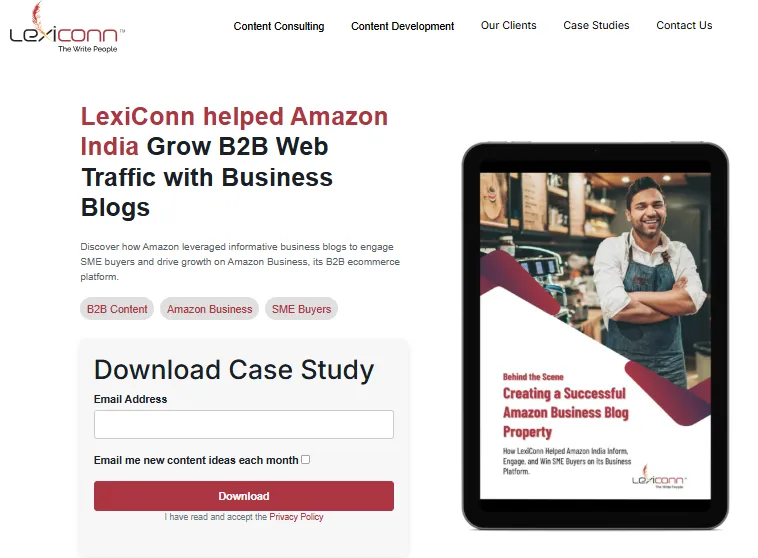
We helped Amazon grow its B2B web traffic through carefully curated business blogs tailored to its target audience.
BPCL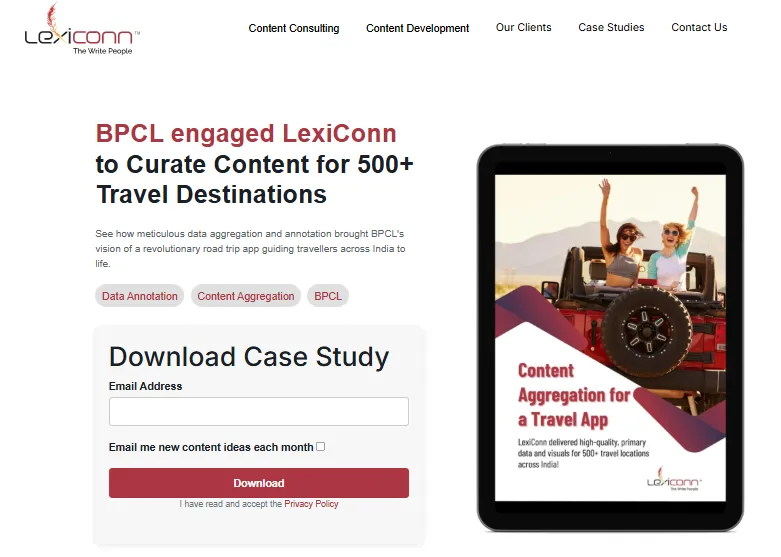
LexiConn curated engaging, informative content for BPCL for over 500 travel destinations, showcasing our ability to handle large-scale, diverse projects.
Content strategy and content marketing are two sides of the same coin. While strategy lays the foundation, marketing brings it to life. Together, they ensure that your content not only reaches the right audience but also drives meaningful results.
For business leaders, the takeaway is simple: don’t choose between strategy and marketing—invest in both. And when you’re ready to take your content to the next level, LexiConn is here to help. Schedule a free 30-minute call with and let’s make your content work as hard as you do.
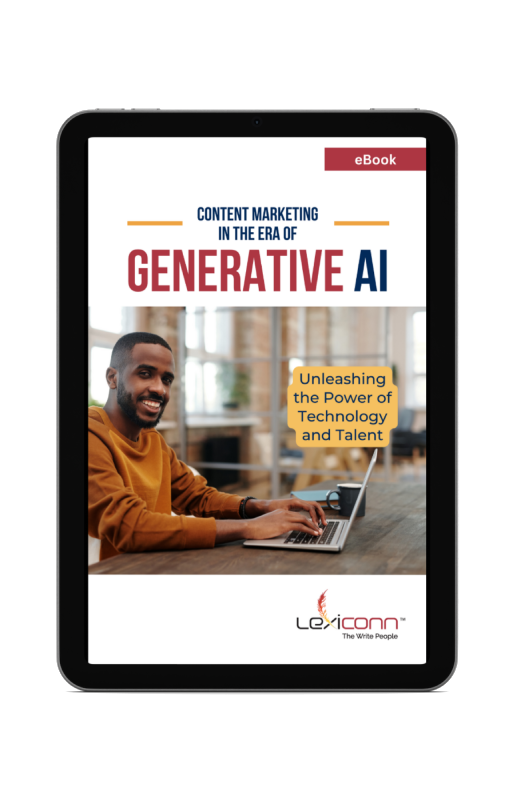

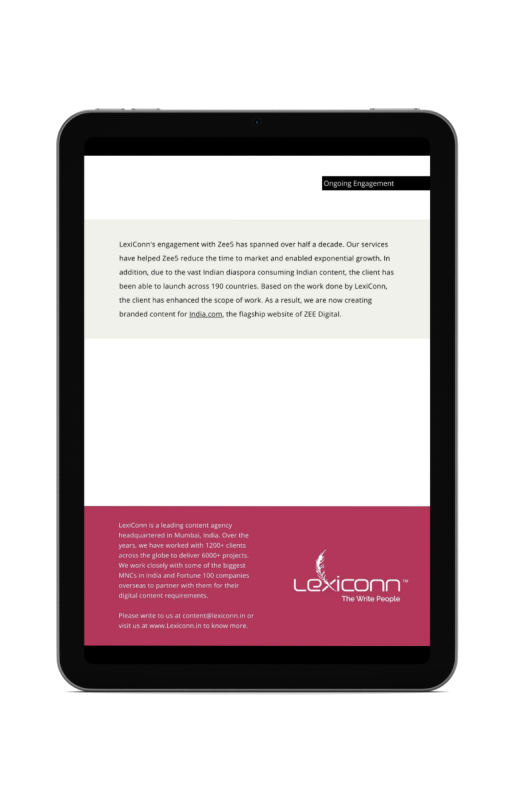
I have read and accept the Privacy Policy
Read More